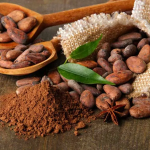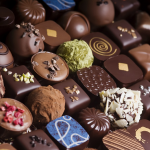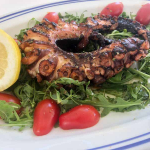Large steaks, strong tastes, and classic style abound at the American Chop House. It has developed from a basic meat-eating venue into a gourmet dining restaurant honouring both history and contemporary tastes. Let’s investigate the American Chop House’s beginnings, evolution, and present course of direction.
The Early Years: Everything Started
American chop houses initially made their appearance in the 1800s In big cities like New York and Chicago, these eateries grew somewhat well-known. People during that period craved plenty of meat for their diets. Serving huge steaks, lamb chops, and pork chops, their term “chop house” derives from their cuisine.
Usually dark and cosy, early restaurants featured cigar smoke and wood furniture. Rich people, businesspeople, and politicians searching for nice food and conversation mostly paid them visits.
Traditional Design with Big Steaks
As the early 1900s rolled around, chop houses gained popularity. Their reputation was for providing a singular experience. The inside spaces sometimes featured leather booths, white tablecloth, and low lighting. Top concern was customer service. Though basic, the cuisine had great quality. Usually accompanied with baked potatoes, creamed spinach, or a wedge salad, steaks were usually the main attraction of the dinner.
Just as much as the food mattered, was the experience. Chop houses evolved into venues for business negotiations, celebration of unique events, or a fun night out.
Variations Over Time
Fast food and casual eating started to challenge venerable chop shops in the 1950s and 1960s. Because they kept to their roots—great meat, competent service, and a timeless setting—many of the original chop shops stayed strong.
Chefs beginning in the 1980s and 1990s began to reimagine the chop house concept. They introduced fresh elements but maintained the classic recipes and generous amounts. Ingredients started to be increasingly locally based. New cooking methods were applied by chefs, and wine lists got longer.
Current Chop House
Chop homes from today combine ancient and modern. Though now there is leeway for change, the old decor with dark wood, big steaks, and traditional service still exists. For added tenderness, modern chop restaurants can provide dry-aged steaks, grass-fed beef, or steaks cooked sous-vide.
Menus can call for vegetarian sides, seafood, and contemporary sauces. Some pair their steaks with exotic tastes like miso butter or chimichurri.
Technology has also revolutionised the way chop houses run. These eateries still have their classic appeal, but today they can attract more patrons via digital menus and social media.
Trends in Popularism Today
Several trends define modern chop houses:
- Wine combinations and craft drinks are now included into the whole dining experience.
- Common sights are open kitchens, chef’s tables, and environmentally friendly methods.
- As more chop shops eat locally grown food, sustainability is rising.
- Updates in design call for modern art, brighter interiors, and a fresh interpretation of classic style.
Taste of Custom and the Future
From its first days, American chop houses have evolved. They preserve their roots—big steaks, first-rate service, and a warm environment but they also keep developing and changing. Today’s chop restaurant provides something for everyone whether your taste is for a classic leather booth’s dry-aged ribeye or a contemporary take on steak in a chic venue.
The next time you eat at a chop house, you are savouring a bit of American history in addition to a great meal.
This post was written by a professional at Bascom’s Chop House. Bascom’s Chop House, a premier steakhouse since 2001, offers a refined dining experience with impeccable service and award-winning cuisine. Our menu features the finest cuts, from perfectly cooked steaks to tender wagyu beef and fresh scallops. We take pride in using organic, hormone-free meats and locally sourced produce, ensuring both quality and sustainability.
